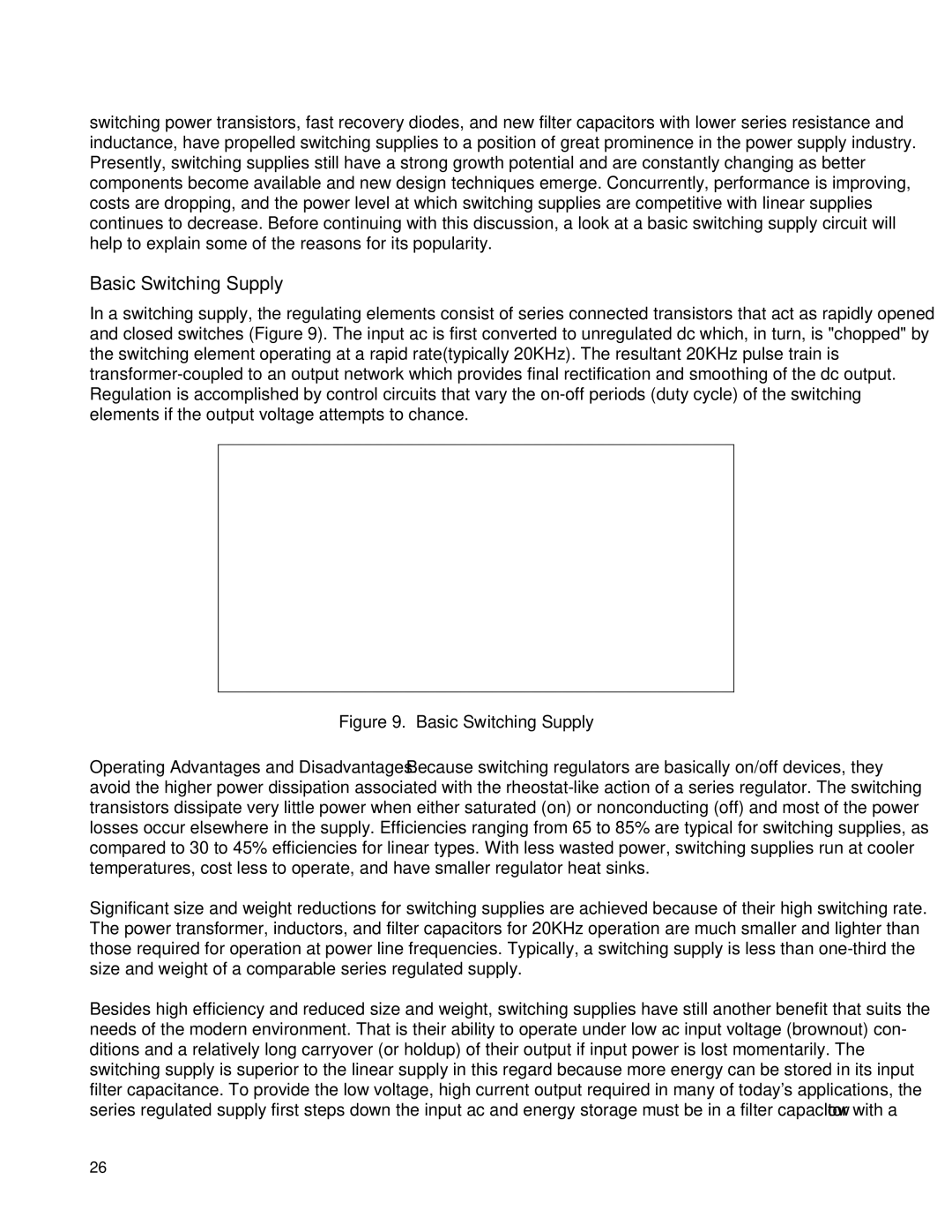
switching power transistors, fast recovery diodes, and new filter capacitors with lower series resistance and inductance, have propelled switching supplies to a position of great prominence in the power supply industry. Presently, switching supplies still have a strong growth potential and are constantly changing as better components become available and new design techniques emerge. Concurrently, performance is improving, costs are dropping, and the power level at which switching supplies are competitive with linear supplies continues to decrease. Before continuing with this discussion, a look at a basic switching supply circuit will help to explain some of the reasons for its popularity.
Basic Switching Supply
In a switching supply, the regulating elements consist of series connected transistors that act as rapidly opened and closed switches (Figure 9). The input ac is first converted to unregulated dc which, in turn, is "chopped" by the switching element operating at a rapid rate(typically 20KHz). The resultant 20KHz pulse train is
Figure 9. Basic Switching Supply
Operating Advantages and Disadvantages. Because switching regulators are basically on/off devices, they avoid the higher power dissipation associated with the
Significant size and weight reductions for switching supplies are achieved because of their high switching rate. The power transformer, inductors, and filter capacitors for 20KHz operation are much smaller and lighter than those required for operation at power line frequencies. Typically, a switching supply is less than
Besides high efficiency and reduced size and weight, switching supplies have still another benefit that suits the needs of the modern environment. That is their ability to operate under low ac input voltage (brownout) con- ditions and a relatively long carryover (or holdup) of their output if input power is lost momentarily. The switching supply is superior to the linear supply in this regard because more energy can be stored in its input filter capacitance. To provide the low voltage, high current output required in many of today's applications, the series regulated supply first steps down the input ac and energy storage must be in a filter capacitor with a low
26
